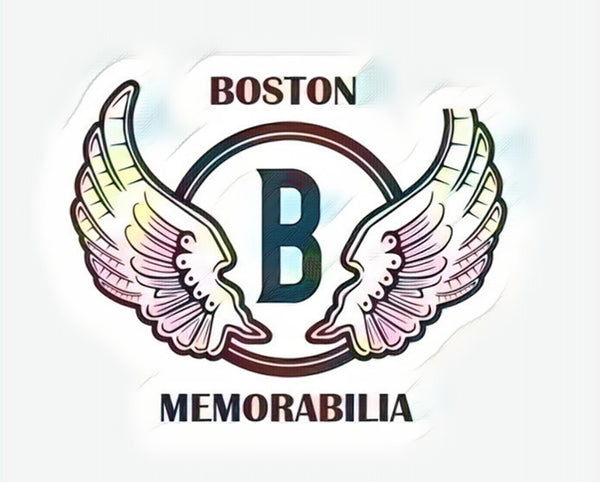Expert guide to Robert Plant autographs
Share
Expert Guide to Robert Plant Autographs: Collecting, Authenticating, and Valuing
If you love Led Zeppelin or rock legends, owning a Robert Plant autograph is a dream come true. His signature isn’t just a mark on paper; it’s a piece of music history. Collecting Plant’s autographs can be both exciting and rewarding. But knowing how to spot a real signature, find rare items, and value them can be tricky. This guide covers everything you need to become an expert in Robert Plant autographs—from tracking them down to keeping them safe.
Understanding the Significance of Robert Plant Autographs
The Legacy of Robert Plant in Rock History
Robert Plant is more than just a singer; he's a rock icon. As the frontman of Led Zeppelin, he changed how bands sound and perform. His voice and style inspired countless musicians. An autograph from Plant connects you directly to this legacy. It’s a tangible piece of who he is and what he’s achieved. For collectors, it’s a treasure that carries deep meaning.
Why Collecting Plant Autographs Matters
Having his signature isn’t just about the value. It’s about capturing a moment in music history. Authentic autographs can increase in worth over time, especially if rare or well-preserved. Many fans see collecting as a way to connect with their favorite artist, holding a piece of the past in their hands. Whether for passion or profit, Plant autographs hold long-term appeal.
Notable Types of Plant Autographs
You can find different types of Robert Plant signatures. Common ones include signed photographs, album covers, setlists, and assorted memorabilia. Over the years, his autograph style has changed, making some signatures more rare and valuable. Collectors often seek specific items, such as signed Led Zeppelin albums or vintage photos.
Where to Find Robert Plant Autographs
Official Sources and Opportunities
The safest way to get a genuine autograph is through official channels. Attend concerts where Plant appears, or look for authorized merchandise from the artist’s website. Sometimes, official charity events or auctions include signed items. These sources often come with guarantees of authenticity, making them safer investments.
Secondary Marketplaces and Dealers
Many collectors turn to reputable auction houses or trusted dealers. Special memorabilia shops also carry signed items. Online platforms like eBay offer a wide selection, but be careful. Always check the seller’s reputation and reviews before buying. Some online auction sites host certified autographs, giving you more peace of mind.
Tips for Buying Safely
Avoid shady listings or suspiciously low prices. Always verify seller credentials. Request proof of authenticity or certificates of authenticity (COA). If possible, see photographs of the autograph being signed. When buying high-value items, consider using escrow services for added security.
Authenticating Robert Plant Autographs
Key Characteristics of Genuine Signatures
A real Plant autograph has distinctive features. He often signs with a large, flowing signature. His "Robert" and "Plant" may have unique loops or curls. The ink used is typically thick and consistent, often black or blue. Look at the placement: autographs on photographs or album covers tend to be centered or in specific spots.
Provenance and Documentation
A certificate of authenticity (COA) is vital. It proves where the item came from. Keep receipts, photos of the signing event, and any correspondence with the seller. Provenance adds value and helps in case you want to sell later.
Expert Authentication Processes
Professionals authenticate autographs by comparing signatures with known examples. They look for inconsistencies or signs of forgery. Many grading services, like PSA/DNA or JSA, provide certified grading. Their opinion can add credibility and value to your collection.
Red Flags and Common Forgeries
Watch out for signatures that look rushed or inconsistent. Forgers often copy signatures from photos or fake autograph guides. Poor ink flow, spelling errors, or unnatural letter formations are signs of fakes. Using magnifiers and UV lights can help detect counterfeit autographs.
Valuing Robert Plant Autographs
Factors Influencing Market Value
Several things influence a signature's price. Authenticity is key; verified autographs fetch higher prices. Rarity matters—signed items from rare events or vintage times are more expensive. The condition also counts, so well-preserved signatures in good condition are worth more. Provenance adds extra value.
Current Market Trends and Price Ranges
Prices vary widely. Signed photos or smaller memorabilia generally sell for $200–$700. Signed album covers or posters tend to go for $1,000–$3,000 depending on rarity and condition. Recently, rare signed bootlegs or limited items have gone for even more at auctions. Always check recent sales to gauge current market trends.
Protecting and Preserving Autographs
Keep autographs out of direct sunlight to prevent fading. Store them in acid-free folders or sleeves. When displaying, frame them using UV-protective glass and proper backing. Lastly, consider insuring your collection, especially high-value items, to guard against damage or theft.
Tips for Collecting and Maintaining a Robert Plant Autograph Collection
Building a Diversified Collection
Aim to gather different types of memorabilia—signed photos, vinyl records, setlists, and posters—to create a rich collection. Set a budget and keep realistic goals. Patience is important; rare items often take time to find.
Authentication and Appraisal
Regularly check in with authentication experts, especially for high-value pieces. Keep detailed records of where and when each autograph was obtained. Updating your provenance info makes your collection more valuable.
Display and Care
Use archival-quality materials to display autographs safely. Keep them in climate-controlled areas to prevent damage. Security measures, like safes and alarm systems, protect your collection from theft. Proper care keeps autographs vivid and intact for years.
Conclusion
Building a Robert Plant autograph collection takes patience, knowledge, and a keen eye for authenticity. From tracking down genuine signatures to understanding their value and protecting them, each step enhances your collection’s worth and significance. Remember, investing in authenticity isn’t just smart—it guarantees long-term satisfaction. Whether you’re a passionate fan or serious collector, following these steps ensures you’ll own a piece of rock history you can cherish forever.
